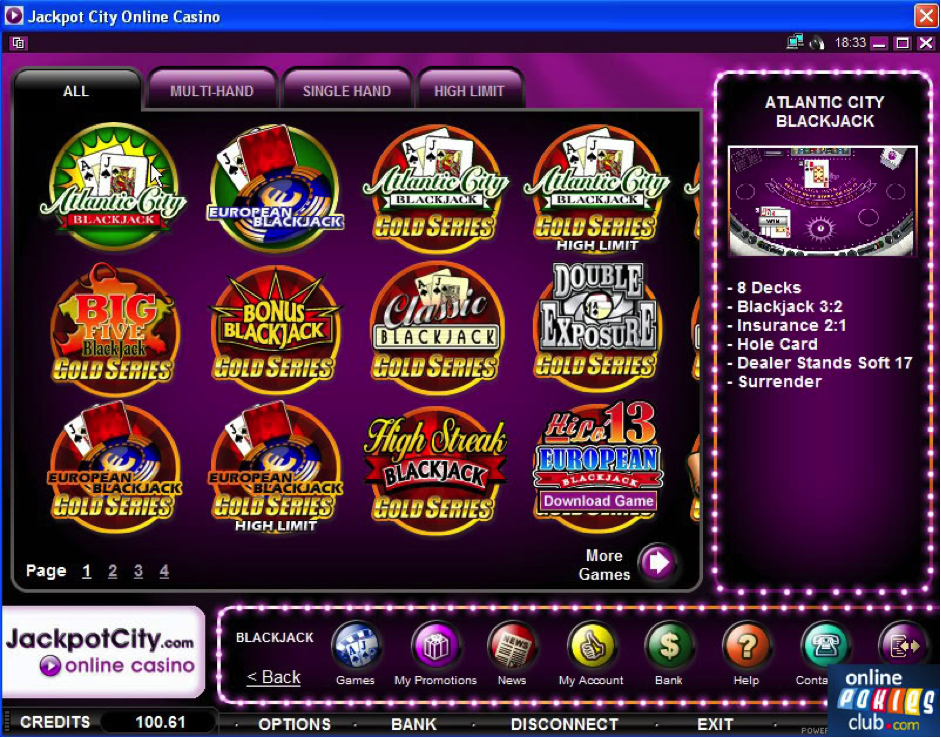
Many players overlook that cashing out in Big Bamboo isn't just about scheduling—it's about tactically aligning with market shifts and personal goals. Recognizing patterns in market sentiment or volume can signal when it's beneficial to liquidate. Your decision should merge insights with a calculated risk approach, ensuring financial objectives are met. Remember, seizing the right moment requires balancing composure and agility. Curious about how seasoned players manage this balance?
Key Points
- Analyze market trends to identify optimal cash-out moments for maximum returns in Big Bamboo.
- Recognize pivotal shifts in market sentiment as indicators for cashing out.
- Set clear financial milestones to determine when to cash out for strategic financial gains.
- Implement risk management techniques to decide cash-out points based on predefined loss and gain thresholds.
- Monitor experienced players' cash-out strategies to inform your own decision-making process.
Understanding the Game Mechanics
Ahead you even consider about redeeming out in Big Bamboo, it's essential to comprehend the game principles that could shift the balance in your favor. Grasping these factors isn’t just a inactive engagement; it’s a deliberate venture. You’ll need to explore into the intricacies of the game approach that determine the ebb and flow of your experience. Acknowledge how each move affects the return structure, as this establishes the foundation of your potential earnings. A strategic approach demands you interpret how payouts match with your play style, urging exactness and foresight. Evaluate how risk-taking and perseverance blend into a integrated success strategy. This foresight leads you to anticipate the best situations for maximum returns, placing you on a route to educated cash-out options.
Recognizing Behavioral Patterns
Although it might seem intuitive at first glance, identifying behavioral patterns in Big Bamboo is a nuanced skill that distinguishes novices from seasoned players. You'll want to hone in on behavioral cues that signal an opponent's intentions. Strategic players will often display delicate decision patterns, showing when they feel assured, wary, or anxious. Observing these can guide your options, aiding swift actions, like cashing out. Approach each move like chess, predicting opponent strategies based on these patterns. It's about building predictive models in your mind. By concentrating on these cues, you'll not only enhance your gameplay but also outsmart competitors. Your mastery of reading behaviors becomes an indispensable asset, transforming potential losses into strategic victories. Focus, analyze, and dominate.
Evaluating Risk Tolerance
To effectively evaluate your risk tolerance, start by identifying your financial limits to understand how much you can afford to lose without compromising your goals. Next, assess your emotional comfort with indecision to ensure that your investment decisions don't lead to unnecessary stress. Finally, define a clear exit strategy that corresponds with both your financial objectives and personal well-being, giving you assurance in the timing of your cash-out decision in Big Bamboo.
Identify Financial Limits
How do you ascertain the stage where peril becomes too excessive to bear? Start with a thorough budget assessment. Analyze your earnings sources and set obligations to recognize discrepancies between your economic ambitions and limitations. Understand your spending limits by calculating essential costs versus discretionary disbursements. This clarifies the maximum acceptable loss you can tolerate without endangering your economic stability.
Strategically, adopt a methodical approach to set clear limits. Factor in potential market variations and how they influence your available cash. By reviewing these economic parameters, you create a measurable framework that guides your risk assessment behavior. Always aim for a equilibrium—maximize growth capacity while preserving your core resources. This calculated balance is vital to making educated decisions when navigating the challenges of Big Bamboo.
Assess Emotional Comfort
Maintaining financial security with emotional comfort is fundamental in analyzing your risk capacity within Big Bamboo. Acknowledging your emotional triggers can avoid impulsive choices that disrupt strategic goals. Identifying these triggers gives you clarity into your comfort areas, allowing you to manage market variations with grace. When you understand what ignites stress or prompts panic, you’re more prepared to make decisions that correspond with your long-term aims. Reflect on past experiences where discomfort caused to rash reactions. Was it market fluctuation or fear of loss? By identifying these patterns, you can create an strategy that respects both your financial goals and emotional limits. Assessing emotional comfort isn’t about shunning risks entirely; it’s about embracing risks that correspond with your emotional resilience.
Define Exit Strategy
Developing an exit plan in Big Bamboo requires strategic foresight and a keen assessment of your risk capacity. You must maneuver the challenges of exit timing with precision, realizing that your financial future could rely on such choices. Commence by analyzing your ease with market instability and possible loss. Ask yourself: Can you withstand a turbulent journey, or do you prefer security? This insight will direct your strategic exit plan.
Next, match your exit schedule with market signals, personal goals, and risk analysis. A premature exit might forfeit potential profits, whereas a delayed one endangers losses. Regularly assessing your plan ensures flexibility to shifting market dynamics. Mastering this method means you're not just participating in Big Bamboo; you're actively orchestrating your financial achievement.
Setting Financial Goals
To effectively determine when to cash out in Big Bamboo, start by establishing clear financial goals that match with your broader life aims. Prioritize your cash flow needs to ensure you're well-prepared for both short-term obligations and long-term goals. Assess current market movements strategically, as they can significantly affect your timing and financial returns.
Define Your Financial Milestones
Creating distinct financial targets sets the groundwork for reaching your prolonged financial aims and provides a tactical roadmap for decision-making. Commence by establishing what success means for you. Are you targeting for premature retirement or acquiring assets? Objectives mapping enables you to structure these goals into actionable steps. Align them with relevant financial standards to measure progress precisely. For instance, if your goal is to buy a new property, identify the necessary savings and timeframe. Each objective should be specific, measurable, and time-bound. Consistently evaluating these milestones ensures that you're on course. By concentrating on quantifiable outcomes, you develop a disciplined approach to wealth management. In the end, a precisely articulated milestones roadmap leads you in choosing when it's sensible to convert out.
Prioritize Cash Flow Needs
With your financial milestones in position, now tackle your cash flow demands to effectively set your financial aims. Start with cash flow optimization by analyzing your income and costs. Monitor these diligently to ensure liquidity oversight meets your goals. Consider https://www.ibisworld.com/united-states/number-of-businesses/casino-hotels/1662 the next steps:
- Evaluate Current Status
Perfecting these steps enhances your financial acumen, securing stability and liquidity, integral for achieving financial success.
Assess Market Trends
Although economic landscapes continuously shift, staying attuned to market trends is crucial for setting robust financial goals. Begin with comprehensive market analysis, identifying patterns and anomalies that could impact your investments. This isn't just about charts and numbers; focus on what they reveal about future opportunities. Integrate trend forecasting into your strategy, looking beyond the present to foresee changes before they fully ripple through the markets.
Harnessing these insights can refine your financial goals, aligning them more closely with potential opportunities or pitfalls. Don’t just react—act strategically by setting a timeline for reassessment, ensuring your goals remain pertinent. By mastering trend insights, you not only protect your investments but position yourself favorably for when it’s time to cash out in Big Bamboo.
Utilizing Strategic Observations
How can you successfully use tactical observations when deciding to cash out in Big Bamboo? First, emphasize on tactical timing
- Market Patterns
- Competitor Actions
- Regulatory Changes
Identifying Pivotal Moments
Spotting the right moment to cash out demands more than just comprehending the patterns and movements. It requires a strategic eye for spotting pivotal moments within the market flow. These aren't mere fluctuations; they're junctures where the trajectory and sentiment significantly shift. You need to hone your skill to identify these indicators—whether they manifest through unusual volume changes, sector trends, or macroeconomic news. Precision in observation allows for timely cashing out, maximizing gains while minimizing losses. Cultivate an adaptive mindset, constantly evaluating the interplay between current market dynamics and historical precedents. Insightful analysis enables you to discern when a peak is not just a peak but a signal: a pivotal moment pointing you either to hold or to execute your cashing-out strategy.
Implementing Risk Management Techniques
To effectively implement risk management techniques:
- Set Clear Limits
- Diversify Investments
- Regular Reviews
These strategic actions bolster your financial position, grounding you in preparation and precision.
Learning From Skilled Players
Seasoned players in the investment arena often serve as invaluable mentors, offering insights that can't be gleaned from books alone. They understand the intricate dance of market dynamics, merging educational strategies with profound knowledge of player psychology. By observing their tactics, you grasp the subtle clues they use to time their cash-outs effectively in a volatile setting like Big Bamboo.
Learn from their careful analysis of trends, their tactical patience, and their ability to maintain composure under pressure—key factors that hone your investment acumen. When you understand why they act, not just what they do, you’re equipped to develop a refined intuition. This mastery enables you to seize opportunities and navigate the economic landscape with a keen, tactical edge.
Frequently Asked Questions
Are There Tax Implications When Cashing Out in Big Bamboo?
You need to consider tax implications like tax benefits and reporting requirements. Understanding these factors is crucial for maximizing benefits. Tactically assess how cashing out impacts your monetary position and ensure adherence for optimal benefit.
How Does Cashing Out Impact Your Eligibility for Promotions?
Navigating the labyrinth of cashing criteria can considerably influence your elevation eligibility. Big Bamboo It's crucial to strategize your cashing out options wisely; alternatively, you might unwittingly burn bridges that could lead to rewarding promotion prospects.
What Are the Technical Steps for Initiating a Cash Out?
To master the crunchbase.com cash out process, you'll need to navigate the game dynamics strategically. Access your account, select disbursement, confirm your total, and complete the exchange. Understand these steps thoroughly to optimize your experience and victory.

Is There a Minimum Amount Required to Cash Out in the Game?
You’re wondering about cash out limits, right? Analyze the game’s withdrawal limits strategically. Consider market conditions and personal objectives. Knowing when the minimum’s met optimizes your cash out approach and enhances your overall gaming mastery.
Can Cashing Out Affect Your Player Ranking Within Big Bamboo?
Cashing out can influence your player ranking in Big Bamboo. Develop strategic cashing tactics that maintain player loyalty and boost rankings. Master the balance between immediate gains and long-term success to optimize your overall gaming engagement.
